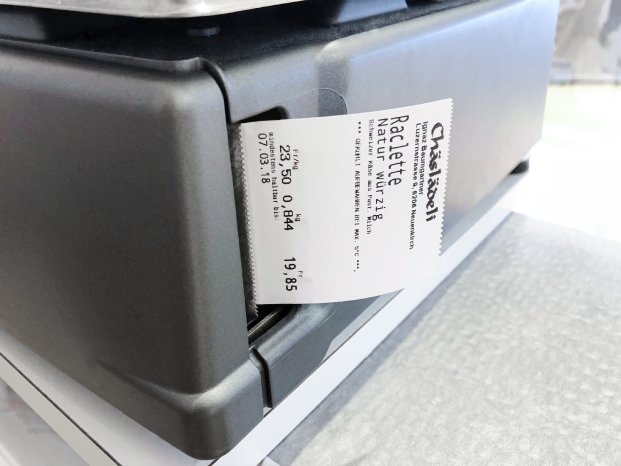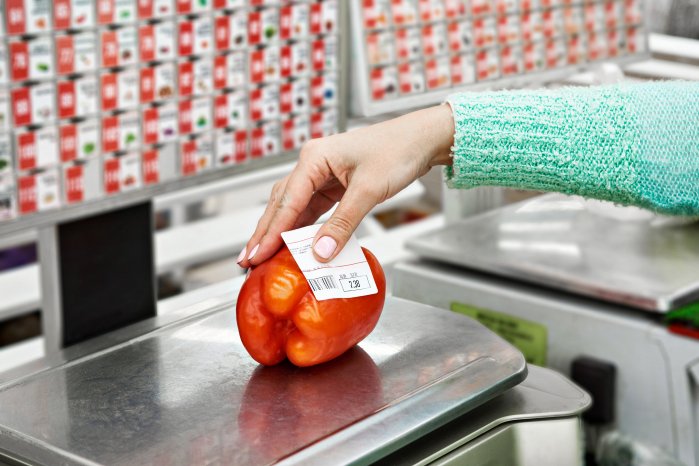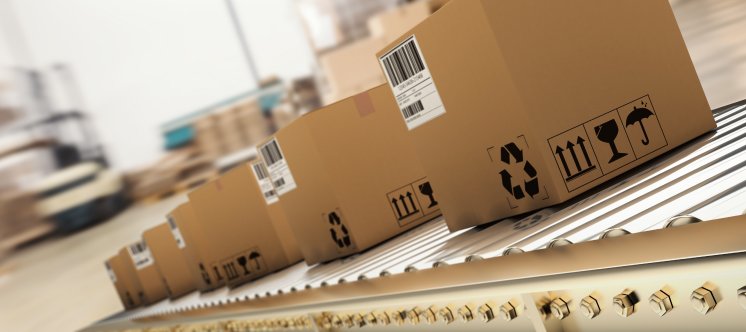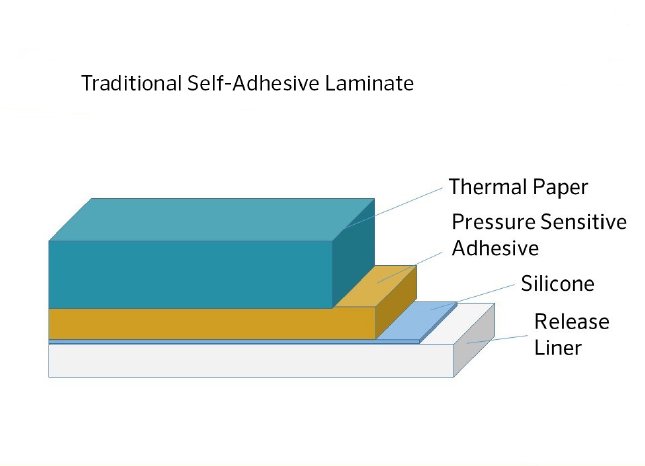A linerless label has three layers. Essentially, it is a piece of thermal paper or film with a layer of silicone on the front and adhesive on the back. The information is printed immediately before use with a thermal printer. For this to be successful, attention has to be paid to a few details in all three components.
Why invest in the right paper?
The key criteria for the paper used for linerless labels is that it has a closed surface so that the silicone cannot penetrate the paper, or a coated surface in the case of thermal papers. If the silicone penetrates the paper, it will damage the anchoring of the adhesive on the reverse side. Conversely, it is important that no part of the adhesive penetrates the paper into the thermal layer, as this will make the printed information illegible. Finally, the paper quality can affect the cutting behavior and cause more or less residue on the cutting blade.
The silicone layer
The choice of suitable silicone is also important. Producers of linerless labels purchase an existing combination of paper and silicone layer, or coat the paper they purchase themselves. There are a few details to consider: if a UV-curable silicone is used – and that is the norm – viscosity matters. If the viscosity of the system is too low, there is a risk that insufficient cross-linking will take place when the silicone penetrates the paper. Conversely, the surface of the paper must allow good anchoring of the silicone. The adhesive layer and silicone layer must be in direct contact on the roll. Here, too, there must be no transfer of silicone on to the adhesive, otherwise its bonding properties will be impaired. Finally, there is also a risk that the thermal heads on the printer will become contaminated with the silicone.
Choosing the right paper and silicone combination is therefore essential. The best choice can be slightly more expensive, but helps to save money in the long run.
Why invest in the right adhesive?
The same applies to the choice of a suitable adhesive; the crucial component of a linerless label. The ideal choice is a hot melt adhesive. A suitable hot melt peels off the silicone layer easily, does not contaminate either the printing system rollers or the cutting device, and ensures the secure adhesion of the label.
Hot melt adhesives are also characterized by high initial adhesion. This enables linerless labels to be applied at high speed. At the same time, hot melt adhesives are resistant to moisture and low temperatures. Modern hot melt adhesives also contain no harmful chemicals and are suitable for use if there is direct or indirect contact with food.
Here also it is worth using a high quality product, as the contamination of printer components, such as the roller, cutting blade or printer head, causes downtime and significant expenditure for cleaning and servicing by specialists. With a suitable hot melt solution, about 1 million labels can be printed and cut without serious printer failure.
In addition to hot melt adhesives, dispersion adhesives and solvent-based adhesives can also be used for linerless labels. If one of these variants is chosen, it is important to consider the moisture sensitivity of the paper. However, regardless of the variant chosen, the right combination of adhesive and paper is the crucial factor.
Applications
The classic area of application for linerless labels is the point of sale; for example, in a supermarket where fruit and vegetables are weighed by the customer and then labeled by them. Hot melt adhesives also bond extremely well to chilled products. Another typical use is on fresh food counters for cheese, meat or fish, where the counter assistant packs the purchased goods in a bag and then seals it using a label that bears all the necessary information.
Generally speaking, linerless labels are suitable for all applications where variable information has to be displayed quickly. That is why they are rapidly conquering markets other than supermarkets: for example, as shipping labels on cartons for logistics, in medicine where personalized test samples have to be accurately labeled, in field work for documentation of maintenance results for a heating system, relabeling on incoming and outgoing goods, and generally anywhere where labels are needed in mobile use. Flexibility is winning the day.
((Infobox 1))
Is there a disadvantage at all?
As linerless labels by definition have no liner, they cannot be die-cut into arbitrary shapes. Cut directly from the roll, a linerless label will usually have a more or less rectangular shape, although implied ovals are also possible.
((Infobox 2))
Contact with food
Strict regulations apply to materials, including adhesives, that come into direct or indirect contact with food. In the EU, these are set by the European Commission. In Switzerland, this task falls to the Federal Food Safety and Veterinary Office (FSVO). In the US, the Federal Drug Administration (FDA) maintains positive lists.
In Europe, the distributor of the food has to prove that there is no risk to the consumer. Suppliers help the distributor by having samples tested by independent institutions.







